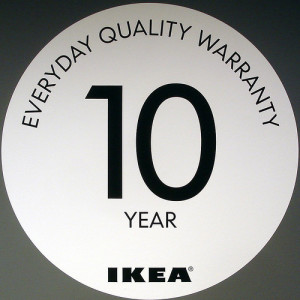 I read with interest this article by Helen Collier-Kogtevs on the API Magazine website called Five Questions To Find An A-list Property Solicitor.
I read with interest this article by Helen Collier-Kogtevs on the API Magazine website called Five Questions To Find An A-list Property Solicitor.
What stood out for me was this:
…For instance, when you’re buying a strata titled property like an apartment or unit in Queensland, you’ll receive a body corporate disclosure statement as part of the process.
If you’re handling your legals yourself, how will you know how to interpret this statement? I’ve reviewed them before myself and I barely know what I’m looking at.
I have prepared thousands and thousands of section 206 disclosure statements over the years and I can assure you, they’re not that complicated. But of course, everything’s relative and what’s easy to me isn’t necessarily easy for others.
What is a section 206 disclosure statement?
One of the problems with people buying lots in body corporates is a lack of understanding that along with your lot you’re buying membership in a body corporate. Not only that, the membership will come with some hefty financial responsibilities.
Apparently it came as a nasty surprise when levy notices started turning up.
To address this problem section 206 disclosure statements were introduced.
Specifically it must be disclosed to the buyer, before they sign the contract to buy, that this lot is a lot in a body corporate for which yearly levies are payable. Further, the current levies payable are … whatever the levies payable for that lot are.
To ensure that the information is actually being communicated to buyers, and before they sign the contract, the section 206 disclosure statement, which is the document that does all this disclosing, must be included at the front of the contract.
You can click here to see what a sample section 206 disclosure statement looks like.
If you’re selling and you need to provide a disclosure statement to your agent click here.
Does it work?
Yes and no. Nearly everyone who buys in a body corporate is aware that there will be levies to pay, notwithstanding there are still some who don’t realise that’s every single year.
But there is still a lot of people who don’t fully comprehend body corporates at all, including some real estate agents. That’s why I wrote The Basics of Body Corporates – What Every New Lot Owner Needs To Know About Their Investment, to offer a clearer understanding.
What is included in a section 206 disclosure statement?
There is no approved format for disclosure statements so they can differ from provider to provider. Despite the lack of conformity they all at least contain the following legislative requirements:
- The name and CTS number of the body corporate
- The real property description of the lot
- The address of the body corporate (not the lot)
- The current Secretary and how to get in touch with them
- The current Strata Manager and how to get in touch with them
- The current levies payable for the lot
- If there are any improvements on common property for which the lot owner is responsible
- If there are any body corporate assets
- Information prescribed under the regulation module, which is now nothing
Other disclosures will include further information depending on the provider. MyBodyCorpReport.com.au disclosures include the contribution and interest lot entitlements, the balances of financial statements and insurance details.
Implied warranties and disclosure statements
Some disclosure statements will include implied warranty information. This information is not a function of section 206 and doesn’t necessarily need to be included in the report.
Implied warranties are created by sections 220 – 224 of the BCCM Act 1997 and they’re aimed at further providing protection for the buyer.
It is implied that the building and body corporate assets are free from defects other than 1) fair wear and tear and 2) what’s been disclosed by the seller in the contract.
That means if there is or has been a giant sink hole under the lot (something I have actually seen happen) then the seller must disclose that fact to the buyer. If they do not and the buyer finds out they may cancel the contract.
Implied warranties end up in disclosure statements not because of any legislative requirement but because the best way for defect information to be found is in the body corporate records, and since you’re already there …
What can a section 206 disclosure statement tell you?
A disclosure statement can tell you:
- Real property details of both the lot and the body corporate
- Whom to contact, and how, if you have queries or need to make an application to have a pet or install an air conditioner etc
- What the current levies are
The levy information is the most important part of the disclosure statement. It should show the full levies payable for the current financial year.
Now that will include the administrative and sinking levies.
It should also include and insurance levies, special levies and levies pursuant to exclusive use allocations. Some buildings have multiple levies to disclose for all sorts of recurring reasons.
But, take note, if a special levy, or any levy for that matter, is mooted but not yet issued, it will not show up in the disclosure statement. Some search agents, such as myself, will show that information if a Notice of Meeting has been prepared and dispatched to owners, but for the most part, let the buyer beware.
A lot of disclosure statements with come with financial statements which really are worth looking at. There are KPI’s that can be easily gleaned from the financial statements that will give you clues to more serious problems.
Finally, if implied warranty information is included take the time to read the information. Take it with a grain of salt though because only building defects are required to be reported.
Despite the good intentions of the legislation a disclosure statement is prepared on behalf of the seller. Only what is legally required to be disclosed is actually going to be disclosed and that may not tell the full story.
 Unless stated otherwise all the information on this website relates to Queensland legislation.
Unless stated otherwise all the information on this website relates to Queensland legislation.
Hi, have recently purchased a town house, and the disclosure statement revealed the sinking fund balance at the end of April . Property was purchased in November , should the sinking fund have reflected the balance at the time of purchase? We have discovered a painting debt owed by the body corp,should this have been declared?
Thanks Brian
Hi Brian
Section 206 is a lot less comprehensive than people think. There is no criteria to disclose the balance of the scheme’s funds at all, let alone a date. Its included as a courtesy and because its a question smart investors ask.
Under section 223 latent and patent defects are required to be declared, along with any unregistered dealings. I’m not sure a debt would be included.
If an action has been lodged against a body corp in QCAT but the hearing has not taken place as yet, does this need to be disclosed in the disclosure statement?
Hi Trevor
A section 206 disclosure statement is a lot less comprehensive than you’d think. As long as you’ve got the levy information, committee and contact details of the scheme that’s pretty much it. You don’t even need to include financial and insurance details though I always do. Its only because these are the questions that buyers ask, not because its legislated.
You could argue that a pending QCAT hearing may need to be disclosed in the contract under section 223 (c) or (d) actual, contingent or expected liabilities or circumstances that might lead to a liability. It will depend what the hearing is for.
We’re selling a unit what do l attach to the form is it just the assets. What does Information Prescribed Under Regulation Module mean. I’ve been told something to do with Bodycorp Manager but l believe they’ll charge for this. How can l answer this question without payment.
Hi Mo
Information Prescribed Under Regulation Module will differ depending on the regulation module of the scheme. In most cases its NIL, except for unregistered dealings and loans.
We are selling our unit but have come up with a problem. Our Secretary / Treasurer? Chairman has resigned due to ill health but we have not as yet elected or found a Body Corporate Manager. This gives us the dilemma of having no contacts for our Body Corporate on the Disclosure Form. The financials are easy to fill in as we are on the committee and I have them from the General Meeting in March. Do we just leave this part blank? Our agent doesn’t know what to do either
Hi Anne
If there is no elected committee and no one to act as body corporate manager then you should include that in the disclosure statement. The address will have to be c/- the body corporate post box, or alternatively the address on record with DERM
I did Not get a disclosure statement with my contract, but felt under duress to sign by the agent on that day, as my offer would only be accepted on that day , the following day would be an open house, so the agent said. I had not heard of a disclosure statement from the agent or my solicitor . Don’t they have an obligation to provide me with a disclosure statement before I signed the contract?
I bought my unit in May 2016 . Is there any thing I can do now is there no point?
Hi Christine
Yes there is an obligation to provide a disclosure before entering the contract. Check your copy of the contract. If the property is a unit and there is no disclosure you may cancel the contract.
Hi Christine
It depends whether you’ve settled on the property. If you haven’t and then you may cancel for no disclosure. Speak with your solicitor.